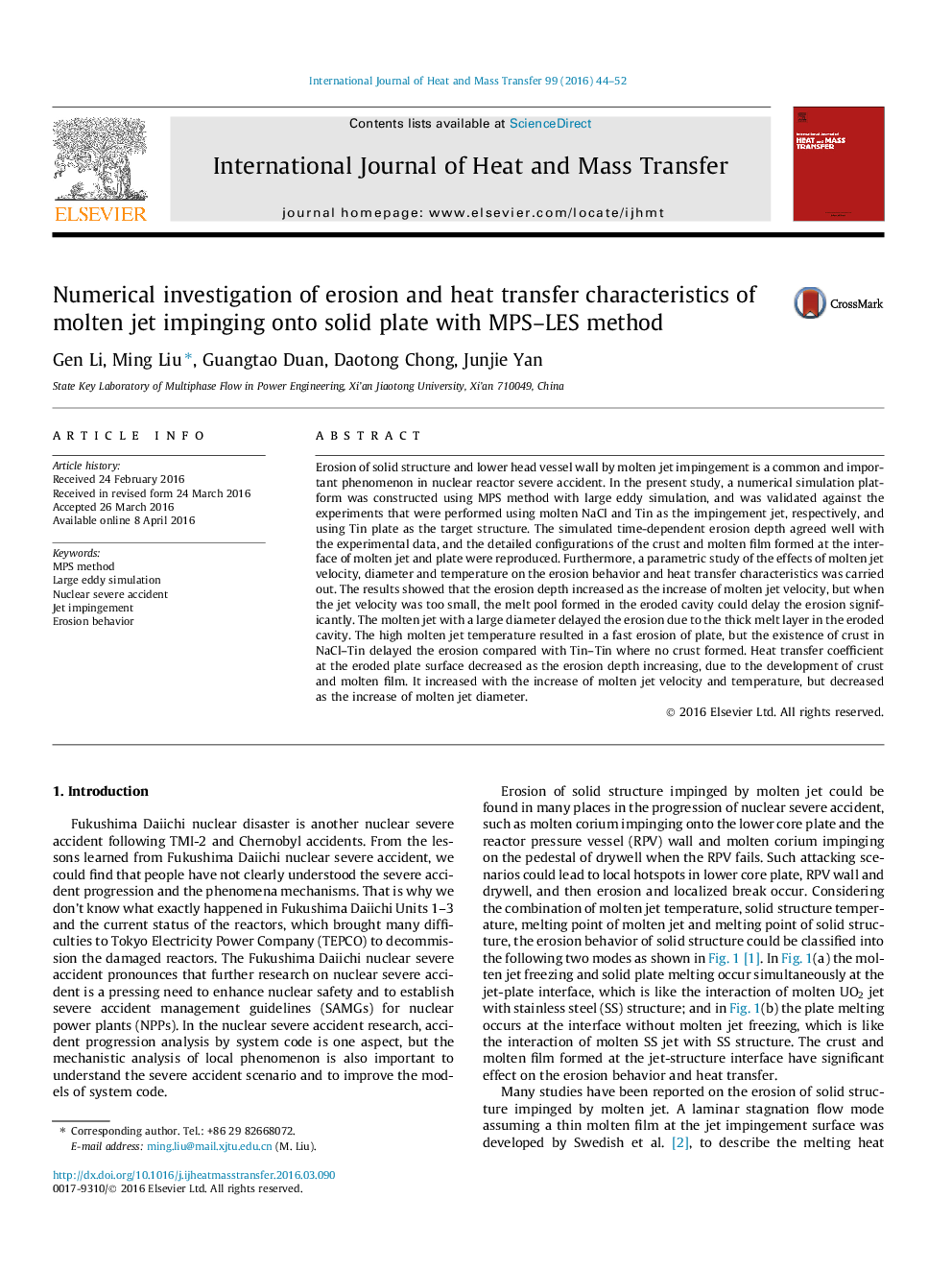| کد مقاله | کد نشریه | سال انتشار | مقاله انگلیسی | نسخه تمام متن |
|---|---|---|---|---|
| 656431 | 1458043 | 2016 | 9 صفحه PDF | دانلود رایگان |
• Sub-particle scale (SPS) turbulence model was coupled with MPS method.
• Detailed configurations of crust and molten film at jet-plate interface were reproduced.
• Parametric study of erosion behavior and heat transfer characteristics was performed.
• Crust formation, melt pool and thick melt layer in eroded cavity could delay erosion.
Erosion of solid structure and lower head vessel wall by molten jet impingement is a common and important phenomenon in nuclear reactor severe accident. In the present study, a numerical simulation platform was constructed using MPS method with large eddy simulation, and was validated against the experiments that were performed using molten NaCl and Tin as the impingement jet, respectively, and using Tin plate as the target structure. The simulated time-dependent erosion depth agreed well with the experimental data, and the detailed configurations of the crust and molten film formed at the interface of molten jet and plate were reproduced. Furthermore, a parametric study of the effects of molten jet velocity, diameter and temperature on the erosion behavior and heat transfer characteristics was carried out. The results showed that the erosion depth increased as the increase of molten jet velocity, but when the jet velocity was too small, the melt pool formed in the eroded cavity could delay the erosion significantly. The molten jet with a large diameter delayed the erosion due to the thick melt layer in the eroded cavity. The high molten jet temperature resulted in a fast erosion of plate, but the existence of crust in NaCl–Tin delayed the erosion compared with Tin–Tin where no crust formed. Heat transfer coefficient at the eroded plate surface decreased as the erosion depth increasing, due to the development of crust and molten film. It increased with the increase of molten jet velocity and temperature, but decreased as the increase of molten jet diameter.
Journal: International Journal of Heat and Mass Transfer - Volume 99, August 2016, Pages 44–52
